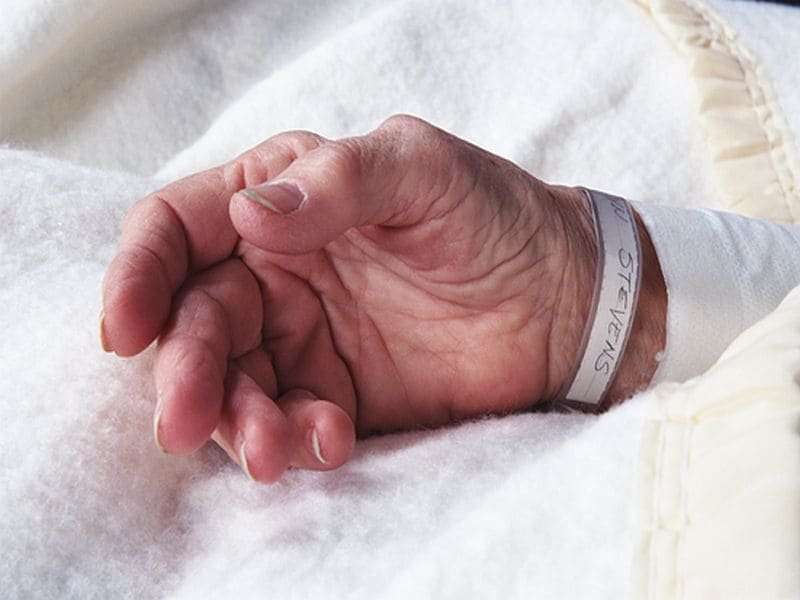Worst bedsores still plague US hospital patients: study

(HealthDay)—Despite years of attention to the problem, U.S. hospitals have made little headway in preventing severe cases of bedsores among older Americans, a new study shows.
Researchers found that across hospitals in three states, the rate of bedsores among Medicare patients dropped by 40 percent between 2009 and 2014.
However, the picture looked less positive after the researchers did more digging. Nearly all of the decline was in early stage bedsores—not the deep, severe wounds that can last for years.
Plus, the researchers said, it's hard to know how much of the decrease in early stage bedsores is "real." The figures come from Medicare billing data—which may not reflect the actual incidence of bedsores among hospital patients.
"We're hoping it's a true decrease, but we can't actually tell," said senior researcher Dr. Jennifer Meddings, an associate professor at the University of Michigan Medical School.
The problem is, the overall rates of bedsores in the billing records were very low—much lower than what Meddings' team found using a different data source.
That source, based on information from patients' medical charts, suggests that billing records captured only about 1 in 20 bedsores that Medicare patients actually suffered.
Bedsores—known medically as pressure ulcers, or pressure injuries—are caused by staying in one position for too long. They can affect people who are bedridden, use a wheelchair, or otherwise have difficulty moving.
Early stage bedsores may appear as red patches on the skin, or a wound that looks like a cut or blister. Advanced-stage injuries are large and deep, affecting tissue under the skin.
Pressure injuries are painful and can lead to serious, life-threatening infections, explained Janet Cuddigan, vice president of the National Pressure Ulcer Advisory Panel. The panel is a nonprofit dedicated to preventing the injuries.
When the wounds are deep, they are also slow to heal, and leave people vulnerable to developing pressure injuries again, said Cuddigan, who was not involved in the study.
She said she was not surprised by the findings, because they echo what some previous research has shown.
But this study confirms the pattern in a broader population, Cuddigan noted. "This heightens our awareness that more needs to be done to prevent pressure injuries," she said.
Hospitals have been trying, Cuddigan pointed out. One way, she said, is through "early mobilization" of patients, even in the intensive care unit.
Other measures include regularly cleaning and moisturizing patients' skin and providing enough protein, vitamins and minerals to keep the skin healthy.
And it's not only bed surfaces that can cause pressure injuries, Cuddigan explained. Tubes and other medical equipment can be culprits.
Meddings made the same point. If a patient needs an oxygen mask, for example, it can cause a pressure ulcer on the delicate skin behind the ear.
"So every day, we need to check behind the ear," Meddings said.
In some cases, prevention is particularly tough. For example, Cuddigan said, a severely ill patient might have a drop in blood pressure each time staff members try a change in position.
And moving patients is not as simple as it might sound, Meddings said. It might require a whole "repositioning team" if a patient is quite heavy, for instance. Plus, there's skill and knowledge involved, Meddings noted. Patients are not simply "turned," but repositioned in specific ways to limit their bedsore risk.
Family members can do a lot to help, however, Meddings said.
"Ask questions," she advised. "If there's any piece of plastic attached to the patient, you can ask, 'Is that still needed?' You can say, 'When I was helping him put on his sock today, I noticed a red spot on his heel.' "
Meddings also recommended talking not only to your family member's doctor, but to the nursing staff, too.
"They really are considered our skin care experts," she said.
Cuddigan agreed that families should feel free to speak up. "We want you to be part of the team with us," she said.
The findings are in the November issue of Health Affairs.
More information: Jennifer Meddings, M.D., M.Sc., associate professor, internal medicine, University of Michigan Medical School, Ann Arbor; Janet Cuddigan, Ph.D., R.N., professor, University of Nebraska College of Nursing, Omaha, and vice president, National Pressure Ulcer Advisory Panel, Washington, D.C.; November 2018, Health Affairs
The U.S. National Library of Medicine has more on bedsores.
Copyright © 2018 HealthDay. All rights reserved.

















